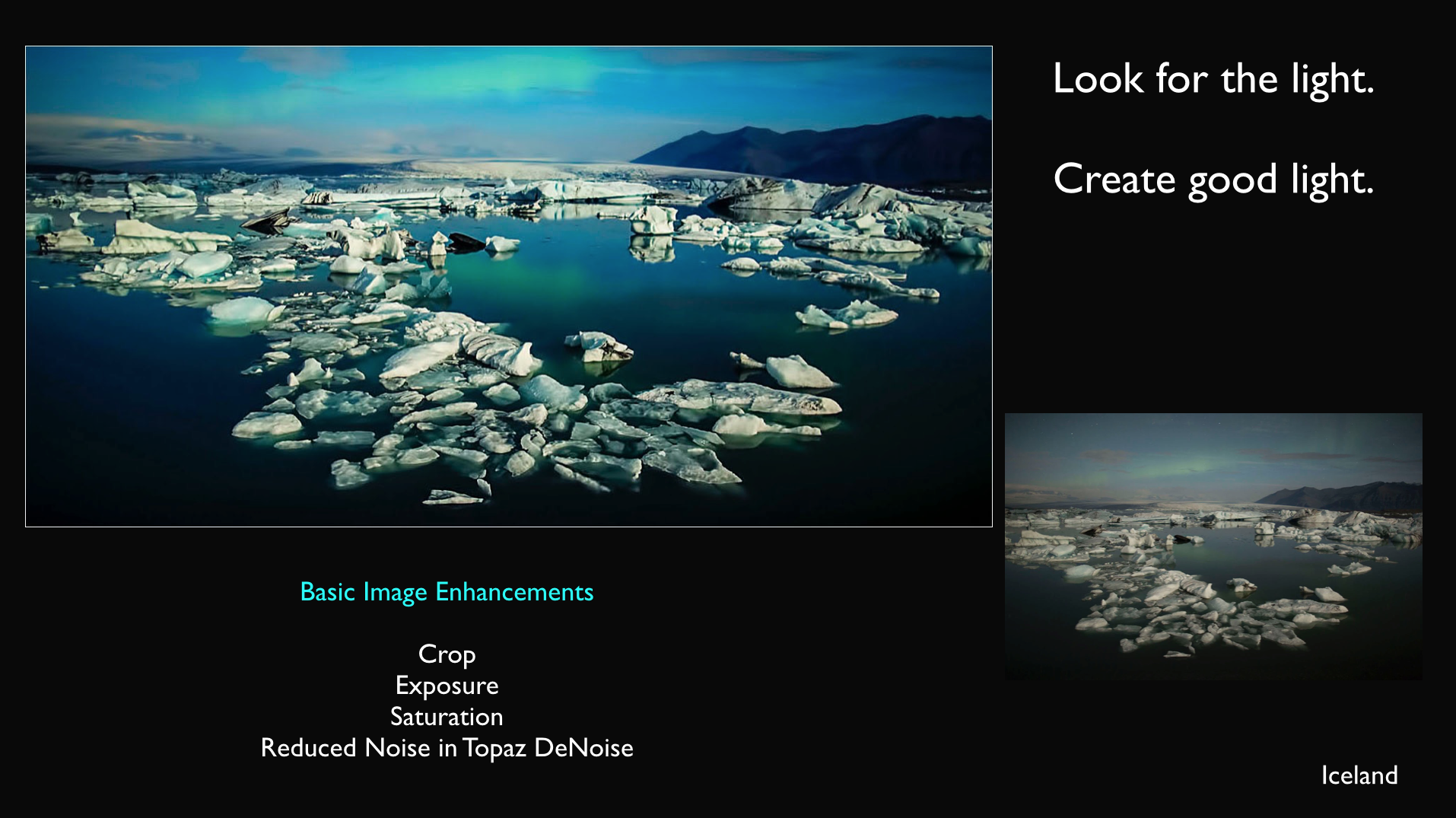My latest on-line class - Master Landscape and Seascape Photography - is here!
Click here to see a free preview (Black-and-white photography).
Introductory offer for blog readers! Use this code - landscapes - to save $10 on the $29.99 class.
The one-hour seminar (like taking a private lesson from me in your home) is a narrated keynote slide presentation that includes more than 225 images and tons of tips gained from my travel to almost 100 countries.
The seminar is actually two seminars in one: a landscape/seascape/coastal photography seminar and a travelog. You'll learn how to photograph from dawn to dusk - and you'll get some ideas on where you can make some awesome landscape and seascape images.
It's a learn-at-your-own-pace seminar that you can stream or download and view again and again.
Got questions? Everyone who attends/views one of my seminars is a student for life. That means seminar attendees can email me questions for the rest of my life.
If you are new to my teaching style, here are some videos - on-line lessons that will help you with your landscape photography:
• Composition - the strongest way of seeing.
• Having fun with filters.
• Lenses for landscape photography.
• My camera settings vs. your creative vision.
Here is the timeline for the class:
00:00 Introduction
01:50 Mood & Feeling
02:43 Why We Photograph – Types of Images
05:56 Basic Concept: Get Everything in Focus
07:50 Basic Concept: Get a Good Exposure
10:05 Basic Concept: Separation
11:58 Basic Concept: Image Enhancements
14:21 Black-and-White Photography
19:14 Time of Day – See The Light
24:03 What If You've Only Got One Shot?
26:15 HDR
30:58 Storytelling With Lenses
33:36 The One-Lens Shoot
36:21 Close Ups
38:56 Stay in Shape
39:37 Blurring Water
41:31 Panoramas
45:54 Composition
49:41 Cropping
51:05 Filters
51.50 Sunrise and Sunset
53.46 Reflections
54.35 Thank you!
During the class you will explore the following locations: Iceland, Holland, Death Valley, North Wales, Mt. Rainier, Goblin Valley State Park, Oregon Coast, Mono Lake, Antarctica, Alaska, Laos, Slot Canyons, Monument Valley and Bryce Canyon.
This is not just a slide show of pretty photographs. For each photograph I give a photography, location or digital enhancement tip.
I hope you enjoy the class - and please don't be shy about emailing me questions.
Click here to order the class.
Explore the light,
Rick
P.S. For more tips on composition, see my KelbyOne class, Composition - the strongest way of seeing.


























